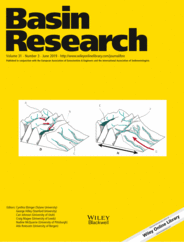
Full text loading...
 , Chaodong Wu2,3
, Chaodong Wu2,3 , Jialin Wang2, Tianqi Zhou3
, Jialin Wang2, Tianqi Zhou3
Sediment provenance studies have proven to be an effective method to extract the sediment provenance and tectonic process information recorded by detrital minerals. In this contribution, we conducted detrital monazite and zircon U‐Pb geochronology and detrital Cr‐spinel major element chemistry analyses on samples from the Qaidam Basin to reconstruct the spatial and temporal evolution of the Altyn Tagh Range and the Qimen Tagh Range in the northern Tibetan Plateau. Based on the significant variation in [Th/U]N, [Gd/Lu]N and [Eu/Eu*]N and the U‐Pb ages of the monazite and zircon, the South Altyn Tagh subduction‐collision belt and the North Qimen Tagh Range were, respectively, the main provenances of the Ganchaigou section and the Dongchaishan‐Weitai section in the Qaidam Basin in the Cenozoic. Paleozoic peak metamorphism, retrograde granulite‐facies metamorphism and amphibolite‐facies metamorphism in the South Altyn Tagh subduction‐collision belt were well recorded by the detrital monazite. In comparison, the detrital zircon is a better indicator of igneous events than detrital monazite. Synthesizing the detrital monazite, zircon and Cr‐spinel data, we concluded that the South Altyn Tagh Ocean and Qimen Tagh Ocean existed in the early Paleozoic and that the Altyn Tagh terrane and Qimen Tagh terrane experienced different Paleozoic tectonothermal histories. The collision between the Qaidam terrane and the Azhong terrane occurred at ca. 500 Ma. The Middle Ordovician was the key period of transformation from the collision‐induced compressional environment to an extensional environment in the area of the South Altyn Tagh Range. In the early Paleozoic, the Qimen Tagh area was characterized by the subduction of oceanic crust.
,The tectonic evolution model of the South Altyn Tagh Range in the Palaeozoic. The Altyn Tagh Range experienced three major tectonic stages in the Palaeozoic. The collision between the Qaidam terrane and the Azhong terrane occurred at ~500 Ma. The Middle Ordovician was the key period of transformation from the collision‐induced compressional environment to an extensional environment. In the late Silurian‐Middle Devonian, the South Altyn Tagh was in a post‐collisional crustal extension setting.

Article metrics loading...

Full text loading...
References


Data & Media loading...

